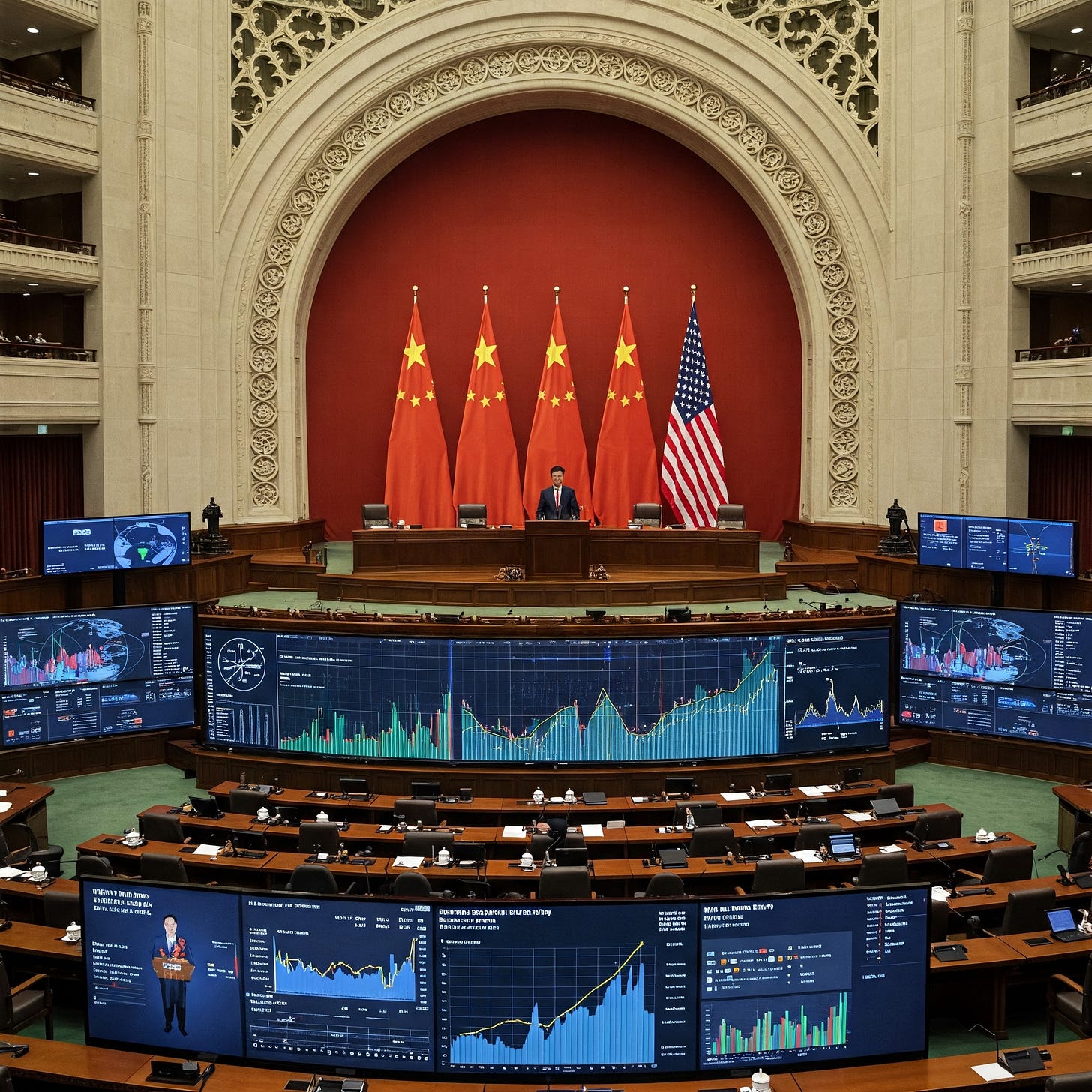🚨China hits back US with massive tariff
what's next?
It’s Wednesday, and the world isn’t slowing down.
Today’s headline? China just hit back at the US with massive tariffs, and the global trade chessboard just got interesting.
From EVs to semiconductors, it's not just about money anymore; it's about power, pride, and policies.
Stay with us as we decode what this move means for the global economy, and why your next gadget might cost a bit more.
Let’s dive in 👇
📌 China’s comeback
The country just announced a significant escalation in its trade dispute with the United States by imposing 84% tariffs on U.S. imports. This move directly responds to President Donald Trump's recent implementation of 104% tariffs on Chinese goods.
The Chinese Ministry of Finance criticized the U.S. actions as a "mistake on top of a mistake," emphasizing China's commitment to defending its economic interests.
📌 How did the global markets respond?
1. U.S. Stock Futures
Futures tumbled sharply as investors braced for economic fallout. Dow futures dropped 500 points (1.4%), the fifth consecutive session in the red. The S&P 500 was down 1.2%, and Nasdaq futures fell 1%.
The S&P teeters near bear market territory, flirting with a 20% drop since its February highs.
2. Asian Markets
Japan’s Nikkei 225 plunged 4%, and South Korea’s Kospi slid into a bear market, triggering a $1.3B emergency response package from Seoul.
Meanwhile, Shanghai stocks curiously climbed 1%, defying the global red sea.
3. European Stocks:
The STOXX 600 index fell 3%, while Germany’s DAX, France’s CAC, and the UK’s FTSE 100 all dropped over 2% in early trading.
📌 How will this impact the global trade?
The intensifying trade war poses significant risks to the global economy:
Supply Chain Disruptions: The high tariffs are likely to disrupt established supply chains, affecting industries reliant on U.S.-China trade.
Inflationary Pressures: Increased costs of imports may lead to higher prices for consumers, contributing to inflation.
Economic Slowdown: The uncertainty and increased costs could dampen business investment and consumer spending, potentially slowing economic growth worldwide.
📌 Potential future developments
As a market expert, several scenarios could unfold in the coming months:
Prolonged Trade Standoff: Both nations may continue to escalate tariffs, leading to a prolonged period of economic tension. This scenario could result in sustained market volatility and a slowdown in global trade.
Negotiations and Partial Resolutions: Amid mounting economic pressures, the U.S. and China might return to the negotiating table. Potential outcomes could include partial agreements addressing specific sectors, though comprehensive resolutions may remain elusive.
Diversification of Supply Chains: Businesses may accelerate efforts to diversify their supply chains, reducing reliance on U.S.-China trade routes. This shift could benefit other economies as companies seek alternative manufacturing hubs.
Policy Interventions: Central banks and governments worldwide might implement monetary and fiscal policies to mitigate the adverse effects of the trade war, such as interest rate adjustments or stimulus packages.
📌 What should investors do now?
Given the current climate, investors should consider the following strategies:
Diversifying investments across various sectors and geographies can help mitigate risks associated with specific market downturns.
Investing in companies with a strong domestic focus may reduce exposure to international trade uncertainties.
Regularly monitoring developments in trade policies and economic indicators is crucial for making informed investment decisions.
So, that’s it for today. If you found this edition interesting and entertaining, please drop a like and follow us for more!
See ya👋



